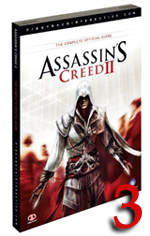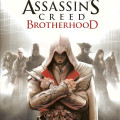 Strategy Guide Review Policy:
Strategy Guide Review Policy:
My goal for these strategy guide reviews is not to discuss whether one needs the guide to complete the game. Every gamer has different strengths and skills, and one may need every bit of a guide, another may need to look up information for quick assistance once, and another may laugh at the idea of ever using a guide, even the online freebies. My goal is to determine whether the guide is 1) helpful in the first place, 2) does it encompass gamers who need hand-holding as well as those who need a quick reference and 3) how much information does it really have.
Review:
This is my first time to deal with a guide from Piggyback Interactive, and I really was not that impressed. While I am willing to admit that this game would definitely not be the easiest to write a guide for, it still doesn’t change the fact that I found most of the guide’s walkthroughs to be unusable.
The guide’s biggest flaw is its design. It’s very artistic and very appealing to the eyes, but while this is very conducive for an artbook, it most definitely is not for a strategy guide. For example, the guide only offers maps of the cities Ezio visited, but provides no maps for any of the walkthroughs, which in many instances, would have been more than helpful and/or welcome. Instead, the guide heavily relies on screenshots to show the player where they should be heading or what they should be looking for. These are occasionally helpful, like in the Assassin’s Tombs, but during missions, they are mostly extremely frustrating and oftentimes provide no assistance.
To make matters worse, the screenshots provided are extremely small, which do not help in deciphering the locations the writers refer to. The screenshots are so small in order to accommodate the other artwork on the pages that had nothing to do with offering a strategy. The artwork should have been replaced with the screenshots themselves, and then the tiny screenshots could have been replaced with maps that detail at least a red path of where Ezio travels in this particular memory. Some of the artwork could still have been used to keep the pages esthetically pleasing, but most of it should have gone in the back as a bonus artbook section.
The guide’s final problem in design lies in its table of contents. The table of contents in the front lists only five sections, and none of these sections are detailed as to what they contain. If you want to find out, you have to flip through the book and use the vertical “tabs” on the outside edge of the pages to find what you are looking for. Again, while this is artistic, it does not help players quickly find what they are looking for. If they want to look up the Achievements or Trophies they can obtain, users will first have to guess if these are listed in the Secrets section or in the Reference section, and then when they get to either section, they will still have to flip through it to find where the Achievements are. As a result, no quick look-up is as quick as it should be.
Fortunately, the writing in the walkthroughs for the most part is simple enough to understand and follow (it was only in a few spots that I had no idea–and still don’t know–what they were talking about), so I could piece together what they recommended Ezio do. Note the words, piece together. While I could usually understand what the writers were trying to convey, the words and directions were often quite vague, even in the sections where the writers provide additional and a deeper strategy, forcing me to rely on myself and what I could see anyway. That’s kind of not the point of a guide. Once again, maps for these missions would have cleared this up.
Now where the guide excels is in the Bonus material. It provides additional maps of each city that detail all the feathers and glyphs and a tear-out giant map that has all the cities with their feathers, glyphs, codex pages, and viewpoints clearly labeled. When I went glyph hunting at one point in the game, I heavily relied on these maps, and they were wonderful. Not only do they label where each feather and glyph were, but they provide screenshots of their locations. As anyone who has hunted feathers and glyphs knows, these are in some funky spots.
The guide also (fortunately for me) has in-depth solutions for each TRUTH puzzle that accompanies the glyphs. I only have one complaint about these solutions, and I fully admit that I’m being nit-picky with it. I really wish that the solutions included explanations for the passcode puzzles. I was able to understand the first couple of these, but after a certain point, I had no idea how to solve them or how these solutions made sense. Just a little nudge in why the passcode is what it is would have been nice for my inquisitive mind.
The biggest bonus that the guide offers (aside from all the pretty, pretty artwork and character designs) is the summary and analysis of the first game as well as the second. It summarizes the plot points of both games, explains each glyph left behind by Subject 16 in the first game, summarizes the second game, explains the cut scenes (such as the big cut scene with Altair and Maria in the middle of AC2), explains the TRUTH, and contains a FAQ session regarding the rather unusual and puzzling ending. While I admit that these are the writers’ own personal thoughts, most likely fueled by hints from Ubisoft, it still helped me wrap my mind around the ending sequences and what is in store for the future of the series.
The secrets that the guide unveils definitely saves it from being completely useless. It’s actually quite unfortunate that the design of the guide detracts from its usefulness so completely. The writing, while rather vague, is mostly fine, but if it only had clearer and larger screenshots as well as individual maps for the walkthroughs, it would not have been nearly as confusing. Due to this weak combination, I ended up not really using the walkthrough sections at all unless I really got lost and mostly used the guide for finding and deciphering glyphs.
Thus, Assassin’s Creed 2: The Complete Official Guide receives a 3/5.



Leave a Reply